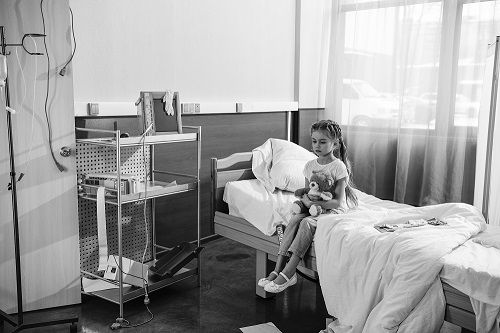Children treated for perinatally acquired hepatitis C virus (HCV) with direct-acting antivirals (DAAs) at 3 years of age will live longer and with lower health care costs than those treated at 6 years of age or older, according to investigators who indicate that their analysis model is the first to project life expectancy with age at treatment.1
Megan Rose Curtis, MD, MS, Division of Infectious Disease, Department of Medicine, Brigham and Women's Hospital, Boston, MA and colleagues point out that the prevalence of HCV among pregnant people in the US increased 10-fold between 2000 and 2019, with vertical HCV transmission occurring in 7% to 8% of the births.1
"This rise in HCV infections among pregnant people is emerging as a public health concern for women and children," they indicate.
In 2021, the FDA approved reducing the age of eligibility for DAA treatment to as young as 3 years.2 With increasing adherence to the CDC recommendation of HCV RNA testing of perinatally exposed infants at 2 to 6 months of age,3 to avoid loss of follow-up with older children, Curtis and colleagues anticipate an increasing number of children being identified, and that "clinicians and families will need to decide whether to treat at 3 years or older."
What You Need to Know
Treating children for perinatally acquired HCV with DAAs at the age of 3 results in longer life expectancy and lower healthcare costs compared to treatment at older ages such as 6, 12, or 18 years.
The study projected that treating children at 3 years of age resulted in the longest life expectancy (78.36 life years) and lowest healthcare costs ($148,162) compared to treatment at older ages.
Ensuring access to DAAs for young children is crucial for realizing the benefits of early treatment.
To inform that decision, the investigators modeled outcomes of treating children at 3, 6, 12 and 18 years of age with the pangenotypic DAA, glecaprevir/pibrentasvir. Assumptions contained in the model include the progression of untreated HCV through liver fibrosis, cirrhosis complications and mortality from liver-related and age-adjusted competing risks of death.The deferred treatment arms were assumed, conservatively, to lose 10% of individuals to follow-up before treatment.1
Health care costs related to untreated HCV were based on reported direct costs from inpatient, outpatient, professional, emergency department services and prescription drugs—excluding antivirals. These were applied, also conservatively, only after development of severe fibrosis.Yearly health care costs after successful DAA treatment were assumed to be the same as for the general population.1
The model predicted a median age of 35 years for development of cirrhosis in the untreated; which was within 6% of the age in the population used to validate the model. The median time from cirrhosis to first decompensation was 10 years in the model, within 8% of median 10.8 years in the validating population.1
The investigators reported that in the simulated cohort of 1000 infected infants, treatment at 3 years of age compared to treatment at age 6 prevented 89 cases of cirrhosis, 27 cases of hepatocellular carcinoma and 74 liver-related deaths.1
The model projected the longest life expectancy for those treated at 3 years of age, 78.36 life years (LYs); which decreased to 76.10 when treatment was deferred to 6 years of age, to 75.99 with treatment at 12 years, and to 75.46 with treatment at 18 years of age. Related health care costs were lowest with treatment at 3 years of age ($148,162); compared to $164,292 with treatment at 6 years, $171,909 with treatment at 12 years, and $195,374 with treatment deferred until 18 years of age.1
"These study results showed that DAA therapy for 3-year-old children was projected to reduce health care costs and increase survival compared with deferral until age 6 years or older," Curtis and colleagues conclude. "Measures to increase DAA access for young children will be important to realizing these benefits."1
References
1. Curtis M, Epstein R, Pei P, et al. Cost-effectiveness of strategies for treatment timing for perinatally acquired hepatitis C virus. JAMA Pediatr. 2024. Published online March 11, 2024. Accessed March 14, 2024.doi:10.1001/jamapediatrics.2024.0114
2. US Food and Drug Administration. First oral pan-genotypic HCV drugs approved for children as young as 3 years.November 1, 2021. Accessed March 14, 2024. https://www.fda.gov/media/154745/download
3.Bender K. CDC Recommends HCV Testing of Perinatally Exposed Infants, Children. ContagionLive. November 13, 2023. Accessed March 14, 2024.

